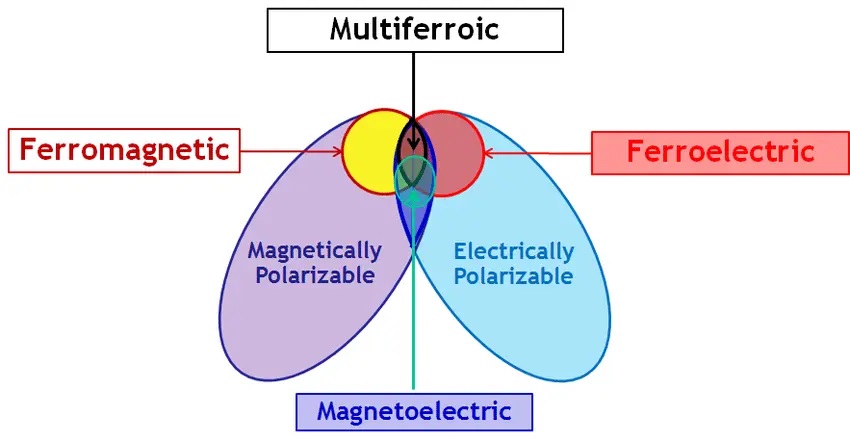
Magnetoelectric multiferroics

Magnetoelectric multiferroics
|
For Prelims: About Magnetoelectric multiferroics, What is MnBi2S4?, Significance of the study |
Why in the news?
Researchers have identified a unique mechanism of electric polarization via magnetic ordering in a novel mineral named “MnBi2S4”, which can be useful for energy-efficient data storage.
About Magnetoelectric multiferroics:
- These are a special class of materials popular among the research fraternity for their rarity and unique properties.
- These materials can exhibit both magnetism and ferroelectricity simultaneously.
- Application: For advanced technology applications like spintronics, electronic memory devices, and other electronic components like actuators and switches.
What is MnBi2S4?
- It is also known as mineral graţianite and belongs to the ternary manganese chalcogenide family.
- It has distinct magnetic structures in the material, including a spin density wave, as well as cycloidal and helical spin structures.
- Importantly, they found that the last two spin structures induced ferroelectricity in the material.
- It is also known to be centrosymmetric and undergoes magnetic ordering at low temperatures (27, 23, and 21.5 Kelvins).
Significance of the study:
- The significance of this finding lies in the strong coupling between magnetism and electric polarization.
- The unique mechanism, driven by magnetic frustration, represents a breakthrough in magnetoelectric coupling.
- Specifically, if the material possesses the ability to exhibit the same phenomena at room temperature, it could pave the way for energy-efficient manipulation of spin using small electric fields.
- This could revolutionize data storage by reducing energy consumption during writing processes.
- These findings can be helpful for the development of a four-state logic memory system, providing additional degrees of freedom for device performance compared to the current binary logic systems.
Source:PIB